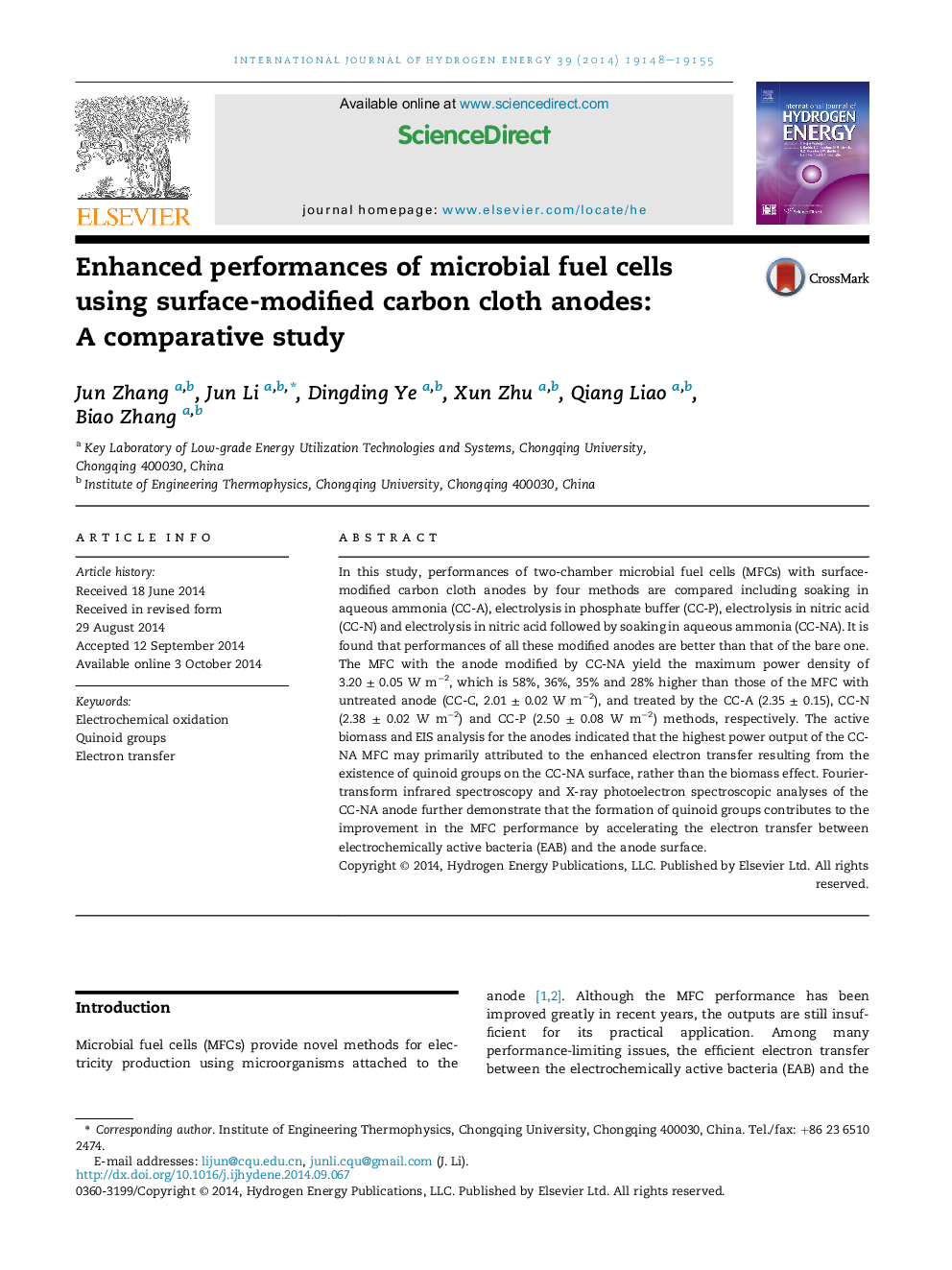| Article ID | Journal | Published Year | Pages | File Type |
|---|---|---|---|---|
| 7717700 | International Journal of Hydrogen Energy | 2014 | 8 Pages |
Abstract
In this study, performances of two-chamber microbial fuel cells (MFCs) with surface-modified carbon cloth anodes by four methods are compared including soaking in aqueous ammonia (CC-A), electrolysis in phosphate buffer (CC-P), electrolysis in nitric acid (CC-N) and electrolysis in nitric acid followed by soaking in aqueous ammonia (CC-NA). It is found that performances of all these modified anodes are better than that of the bare one. The MFC with the anode modified by CC-NA yield the maximum power density of 3.20 ± 0.05 W mâ2, which is 58%, 36%, 35% and 28% higher than those of the MFC with untreated anode (CC-C, 2.01 ± 0.02 W mâ2), and treated by the CC-A (2.35 ± 0.15), CC-N (2.38 ± 0.02 W mâ2) and CC-P (2.50 ± 0.08 W mâ2) methods, respectively. The active biomass and EIS analysis for the anodes indicated that the highest power output of the CC-NA MFC may primarily attributed to the enhanced electron transfer resulting from the existence of quinoid groups on the CC-NA surface, rather than the biomass effect. Fourier-transform infrared spectroscopy and X-ray photoelectron spectroscopic analyses of the CC-NA anode further demonstrate that the formation of quinoid groups contributes to the improvement in the MFC performance by accelerating the electron transfer between electrochemically active bacteria (EAB) and the anode surface.
Related Topics
Physical Sciences and Engineering
Chemistry
Electrochemistry
Authors
Jun Zhang, Jun Li, Dingding Ye, Xun Zhu, Qiang Liao, Biao Zhang,
